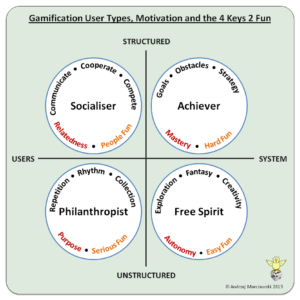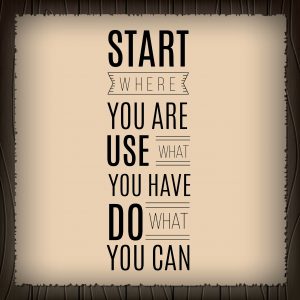Gamification is often used to add feelings of achievement into an experience. Achievement is earned over time through completion of challenges or tasks. The effort the end-user has to put in to earn their achievement will determine how strong the feeling of achievement will be.
Climbing Mount Everest
People that climb Mount Everest and other major mountains, often cry when they get to the top. The climbers may comment afterwards that they didn’t expect to cry but their sense of achievement sort of expressed the amazing feat for them. Tears act as a safety valve by releasing excess stress hormones such as cortisol. To create this kind of response the effort is one that that takes preparation, planning and in a lot of cases more than one attempt to make it all the way to the top.
In a work setting a Mount Everest style achievement, may be making a promotion that you have worked hard for or closing a deal that has taken a number of months, meetings, pitches, proposals and more to realise.
Designing for achievement in gamification
When we are designing for achievement in gamification, we may also need to build in effort and tough levels. Some of the early gamification efforts gave badges somewhat like confetti under the premise of creating a sense of achievement, most of us have realised by now that this doesn’t work. They can be useful as milestone markers but their frequency and what you need to do to earn tell you quickly how valuable they are.
In learning, we associate major achievement rituals at graduation after a 4-year degree programme for example. However, completing your annual compliance training will be much less exciting, the virtue of having to do it each year is one thing and then the added perception and sometimes reality that you have seen all the material before. Making compliance and other training of this kind unnecessarily hard is also not the answer, if you want your people to comply.
Best suggestion for this kind of programme is to make it as relevant and real as possible with tangible scenarios and having your people make choices with consequences. One consequence can be that they go to jail or cause the company a big fine, of course, it needs to be a real potential risk. The more thinking and chances there are to be slightly wrong and having to start again will create a perception that first of all this isn’t as easy as I expected. Secondly, it will stimulate a bit of brain activity to make sure they read the scenarios and choices better next time. If it then takes a few run-throughs before an individual can hit a perfect score with a clean record of no bad choices, you will have evoked some stress along the way and the chances of them feeling a bit of pride and achievement are higher.
Achievement differs on an individual level
We can’t discuss achievement as a blanket approach. How we experience the world is vastly individual. Not everyone cries at the top of Mount Everest, some just sit and take it all in and others may resort to a victory dance of some kind. The work in gamification by Nicole Lazzarro around easy and hard fun as well as the player types by Andrzej Marczewski combined gives some insight that preferences exist depending on player types. Although the image is a bit old and newer versions are available, it still illustrates the point that knowing that there are differences in what players respond to and the type of level of challenge to create.

From a gamification design perspective, it is therefore good to be aware of what kind of players you have in an organisation and when they experience a sense of achievement at work. I suggest asking them in your user research when starting a project.
Achievement mechanics
The game mechanics that can create a sense of achievement are quite plentiful, here is a selection of them:
- Levels: bronze, silver, gold
- Status: novice, intermediate, master
- Quality indicators: 1-5 stars
- Progression markers: badges, points or progression bars
- Certification
- Victory points
- Resources gained
You may not need to use all of them, but you may want to build them up over time and effort. The critical key is to make them meaningful by keeping them relevant to the process, the job and the level of ability you expect players to have. Another important factor is to indicate how these achievement markers can be earned, otherwise, the exercise will become pointless quite quickly.
Roadmaps and visual prompts can serve as a great reminder of the journey taken. When you are standing on the top of the mountain, you can look back to where you started. Giving a visual prompt through an image or a heads up display where all the data are gathered can again increase the sense of achievement an individual experiences.
Just understand that everyone will react differently and whilst some may do a victory dance, others will prefer to just smile knowingly and in private.
https://gamificationnation.com/gamification-trends-for-2019/





